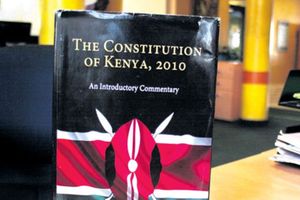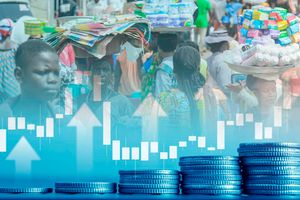
The International Monetary Fund Headquarters in Washington, DC.
Conversations about Kenya’s public debt often focus on the external component, and the IMF’s role in it. The latter is characterised as the big, bad ogre, forcing hapless poor countries to undertake austerity and taxation measures that hurt their populations. This view is very widely held by senior officials and cabinet secretaries in our beloved Republic. And, as I found out recently while on assignment about parliamentary public debt oversight in Malawi and Sri Lanka, it is a view held across the globe.
As I have said on this column before, I do not hold brief for the IMF. I simply hold a view contrary to the conventional wisdom. My view is based on publicly available data. The current Kenyan debt crisis is driven by domestic debt. The situation is even worse in Malawi. For every one shilling Kenya pays in interest on foreign loans, it pays four on domestic loans. In Malawi, for every Kwacha paid on interest on foreign loans, nine are paid on domestic loans.
In the Kenyan case, foreign and domestic loans are almost equal in proportions, about Sh5.5 trillion each. Domestic interest rates are, however, four times higher than interest rates charged by external lenders. It is the Central Bank of Kenya, and the National Treasury, not the IMF, that determine domestic interest rates.
Inflation
Central Bank is in charge of efforts to keep inflation under control. Their main tool is interest rates, based on the basic economics assumption that inflation is simply too much money chasing too few goods. When inflation is on the rise, the Central Bank deliberately pushes up the cost of money, slowing down money supply, thereby reducing inflation. Governments are afraid of inflation because as we saw in Zimbabwe, it can quickly erode wealth, destroying an economy.
Every three months, a committee of well-fed Kenyans called the MPC, meets to consider your fate. Chaired by the Governor of the Central Bank, they sit in a wood paneled, air-conditioned boardroom, and after some reflection, pronounce the policy interest rate, currently at 13 per cent. All other domestic interest rates are expected to be higher than that.
The National Treasury, on its part, determines interest rates by its borrowing behavior. When they decide not to borrow, as they did during Kibaki’s first three years in office, interest rates on the benchmark 91-day treasury bills plummet. In those glory days, the rate dropped to just under one per cent.
Commercial Banks, unable to make quick money lending to government, were forced to look for customers, literally pitching tents on Nairobi sidewalks. In contrast, Treasury’s current insatiable appetite for debt means they are willing to pay 16 per cent for the 91-day borrowing. Banks, insurance companies and rich individuals are, well, laughing all the way to the bank!
The decisions to borrow are based on the misguided notion that governments can run deficit financing indefinitely. As you know from your own personal or business finances, it is not possible to borrow without limit. When you try, debt service demands soon overwhelm your cash flow.
Lender of last resort
When countries get to that point, they go to the lender of last resort – the IMF. Rather than being a big bad ogre, the Fund is in fact an ICU attendant, for badly run economies.
True, the IMF imposes conditions. First, they demand that countries live within their means. Called fiscal consolidation in our jargon, a country has two options. One is to reduce expenditure. The other is to raise more taxes by either getting more people to pay or increasing what current payers are coughing up, or both.
The Kenya Kwanza regime has chosen to tax you more. That is why they increased fuel levy and were targeting motor vehicles and bread with a circulation tax, and VAT respectively. To get more people to pay, they targeted farmers with a withholding tax on farm produce, and a turn-over tax for micro businesses. Their infamous plan was to increase tax collection by an average of 350 billion shillings per year.
They could, of course, have cut expenditures to begin with but did not, never mind that every document written by Treasury talks about fiscal consolidation. They could have gotten rid of money draining parastatals but did not. They could have cleaned out the budget to get rid of legacy programs which have outlived their purpose but did not. To be fair, the National Treasury is a servant of the Executive. The buck stops with the president, and the current one is not walking the talk.
The Gen Z revolution has forced him to abandon plans to increase taxes, and consider reducing the budget. Cynically though, rather than going after the nearly Sh650 billion in travel, hospitality and furniture costs, he has chosen to reduce the development vote. This is his choice, not the IMF’s! In a deft political maneuver, however, he has coopted my pals from the opposition to carry this skunk!
Examining the most recent publicly available debt register for the 2022/23 financial year, you will be surprised that the total borrowing from IMF was under Sh335 billion by June last year, compared to nearly Sh880 billion from the Exim Bank of China, Sh997 billion from Citigroup Global Markets in form of euro bonds, and Sh1.57 trillion from the World Bank. Keep in mind, however, that Exim and commercial loans are way more expensive than the concessional loans from World Bank, and one Eurobond has since been replaced with a new, more expensive one.
@NdirituMuriithi is an economist and partner at Ecocapp Capital













